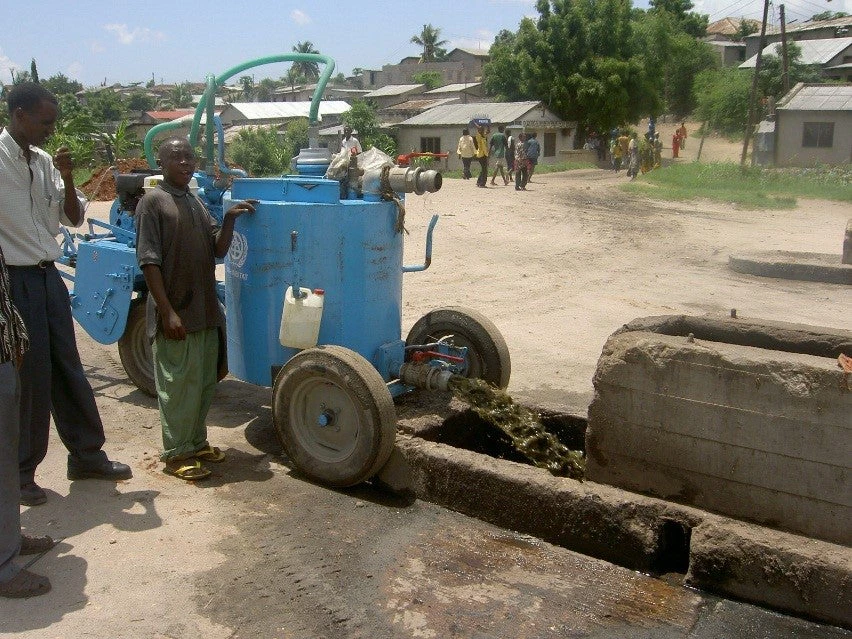Recently developed Fecal Sludge Management tools to help address this important, but often-ignored, urban sanitation issue.
A global challenge
In the rapidly expanding cities of the developing world, sanitation is of ever growing importance – more people mean more exposure to fecal pollution, and therefore a greater risk to public health. The widely accepted solution, taught to sanitary engineers worldwide, is to flush human waste into sewers which take it to large, centralized treatment facilities.
This requires expensive infrastructure, a plentiful water supply, skilled operators and a substantial and reliable stream of operating funds. This means that in most low- and middle-income country cities, the sewerage service is only available to a small and decreasing proportion of the population, as investments cannot keep up with the explosive urban growth.

In unplanned areas, which often comprise the greater part of the city, water supplies are frequently inadequate, and the high investment costs of sewerage cannot be justified because land use patterns are disorganized and rapidly changing, and housing may not be entirely legal. As a result, while businesses and rich people who occupy formally planned areas may have access to government-funded sewerage systems, poor people in unplanned areas are left to fend for themselves, with little or no support. They typically use non-networked sanitation, with excreta and wastewater discharging into a septic tank or pit, or directly into the environment. When pits and tanks fill up, they are often emptied by informal, unhygienic and degrading manual methods, with the fecal sludge being buried or openly dumped. The result is recurrent outbreaks of cholera and other enteric infections, which affect the whole city.
Given that universal sewerage is not feasible, it is critical to improve the effectiveness of non-networked sanitation options for the many, as a complement to sewerage access for the few. This is recognized in the post-2015 Sustainable Development Goals (SDGs), which include the whole sanitation services chain, from the toilet, to excreta containment at the household – in a pit or tank or flushed into a sewer – to transport, treatment and disposal.
Fecal sludge management services
In many cities, the emptying, conveyance, treatment and disposal of fecal sludge has largely been left to unregulated private, informal service providers. These fecal sludge management (FSM) services became a problem that is going unaddressed – "the elephant in the (urban sanitation) room".
To address this neglected but crucial part of urban sanitation, the World Bank has developed some tools to diagnose FSM status and to guide decision-making. These tools don’t provide pre-defined solutions, as the many variables and stakeholders involved demand interventions specific to each city, and should be seen within the context of integrated urban water management (IUWM). Our focus on FSM was simply to enable a more balanced and inclusive approach to urban sanitation, rather than concentrating only on sewerage. We are now working to broaden the tools to address urban sanitation as a whole.
These tools can be accessed on the Water Topic Website of the World Bank now. We will be blogging more on the FSM study findings, results and next steps soon... stay tuned.




Join the Conversation